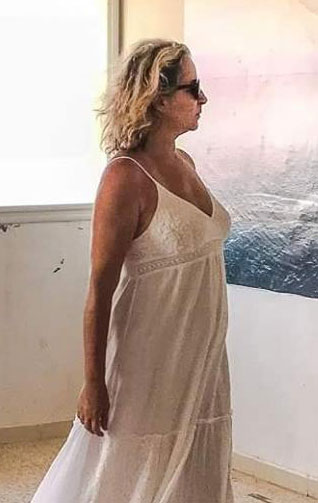
1001Tunisie: “Once upon a time the Cap Bon” is there a book or memories of Cap Bon book as you dreamt of it?
Saleh Jaber: It is the book of Cap Bon, not as I dream, but I would like it to stay. With all the changes that we see in our Tunisian landscape in recent times, we may not recognize it in a few years. I hope the photograph will be a witness for future generations.
So far, I am not pessimistic , on the contrary, this art that I ‘ve been practicing for over 30 years has given me that happiness and pleasure. It introduced me to the wonders through our beautiful Tunisia and this testimony that I try to share with my photos. Share to enjoy, to keep, to preserve, in a word for LOVE.
Doesn’t This picture embellishes the reality?
The picture does not embellish reality, it is reality. We just have to find the right angle and the right light. What is more beautiful than getting up every morning and admiring our surroundings. Just after putting it in a small black box and if one has the eye and the soul of a poet, it will make a beautiful image, without having to embellish or retouch anything.
How does a country tell its own story?
A country is countedts by i eyes and its heart. Learning to look, to listen and know how to love are in my opinion the ingredients to know how to tell.
Why this region rather than another?
Why this area? It is the village of El Haouaria that gave me this desire to discover the Cap Bon.
Ten years ago, I had edited it once upon a time was Ghar el Melh. People of Ghar el Melh, I could not but be attracted by the similarity and resemblance to El Haouaria, only the opposite extreme to Ghar el Melh in the Gulf of Tunis. The similarity of landscapes and traditions of its people has made it so that the path was already mapped out to continue the escapades throughout the Cap Bon.
And two years later, it gave birth to the first book published by this young publishing house, Editions FIL, which I hope will bring through its publications testimony to share our Tunisian heritage awareness in doing so our fellow citizens to safeguard this wealth that nature has given us.
Do you have other projects coming soon?
Projects? Continue the series of books on different regions with FIL Editions. “Once upon a time Kerkennah” is next on the list. Finalize a project in progress in virtual tour, similar to www.medinatunis.com
And a small information exclusively for Arabian Tunisia: After 3 years of interruption, we will resume the Rencontres Internationales de la Photographie of Ghar el Melh (the international meeting of the photography) in 2014.
Let us take advantage of this interview to ask you to give useful adviceand tips to our readers.When we travel and that we have the easy trigger, storing pictures is often problematic. What advice could you give to all photographers who slumber within us?
It is true that the advent of digital photography has changed our habits. The time of the film, each image was counted. We pressed the trigger when we were sure of the result. Fewer, photographs were easier to archive. Now we trigger so easily. It is not quickly draws our shadow but the triggers are often put to use in a day. The hard part is after. With this profusion of images, it is difficult to navigate. Then the first reflex is to remove everything that is not quality good photo : light, framing, sharpness and more.
Then archiving. Start by renaming your images by choosing a variety of keywords, allowing you to quickly find your photos. A photo without name is very difficult to find in one or more hard drives. As shoemakers are always the worst shod, sometimes I go clean up an image on the field instead spending two to three days searching in my archives.
Another tip not least, keep your photos on several different media. A DVD or hard drive can easily be damaged and there are all the archives that disappear.
Another tip for the end, for those using reflexes, change as little as possible the objective of your device: each handling, dust, which is the mortal enemy of digital, enters the sensor. And whether to spend 5 to 10 minutes per photograph, on an image editing software to remove these imperfections, multiplied by a report of 200 pictures, you better go buy another device.
{} Mainvote


 َAbonnez-vous
َAbonnez-vous

